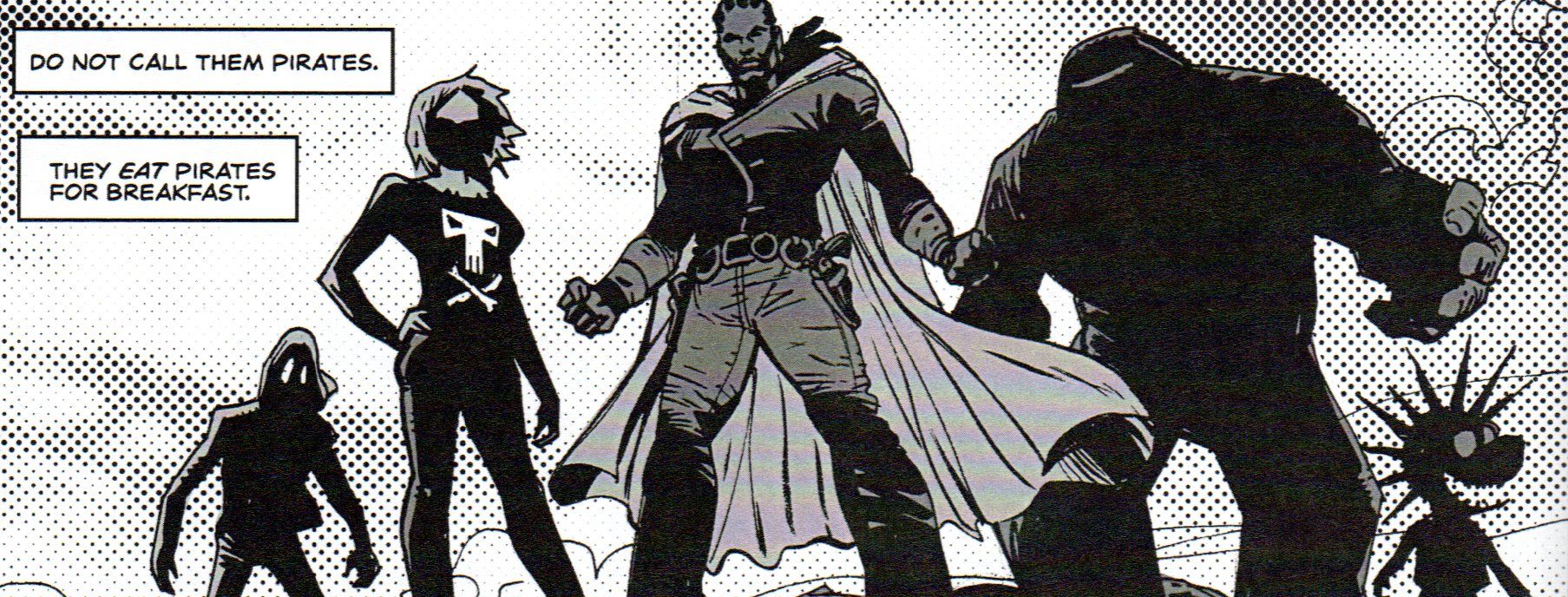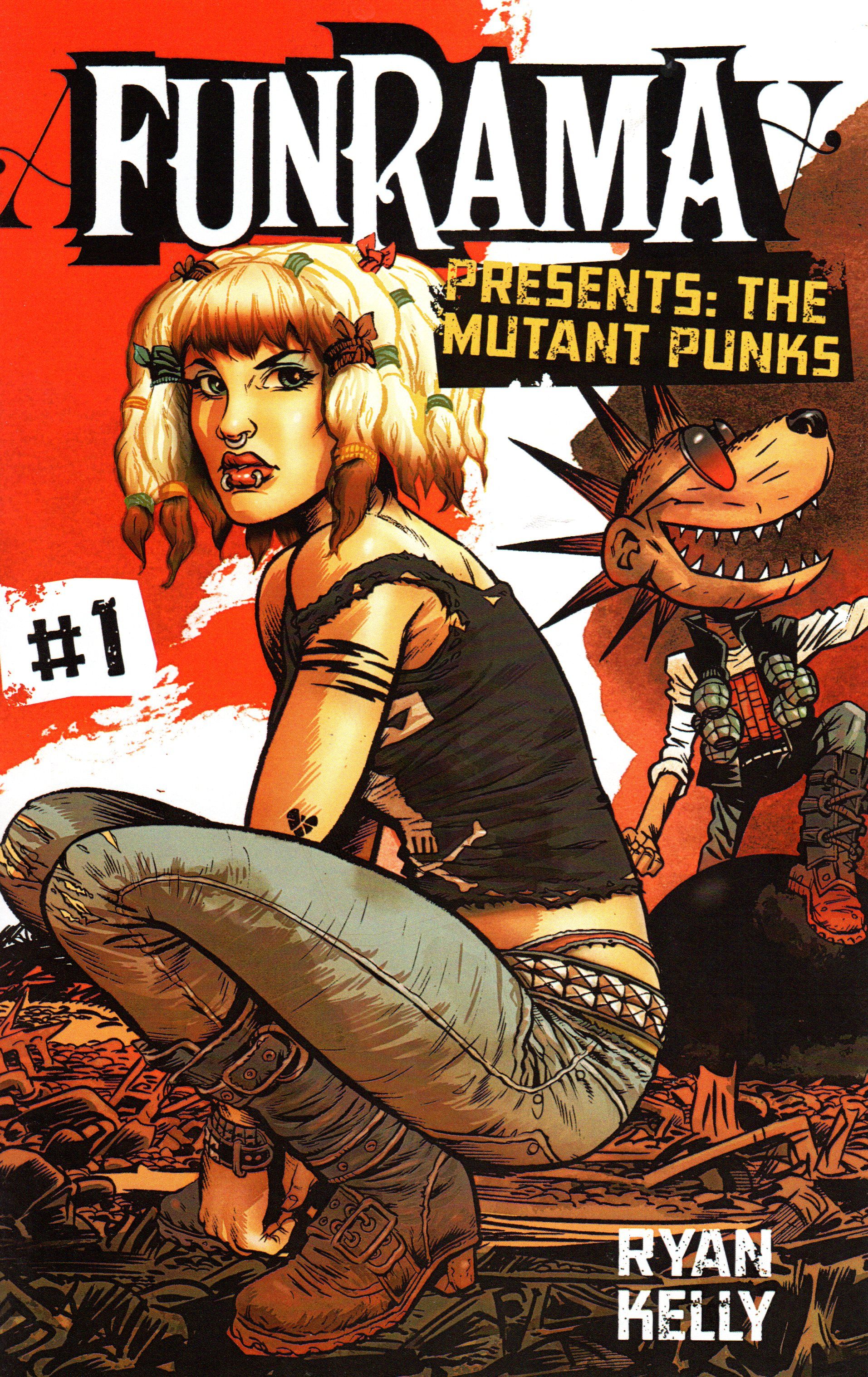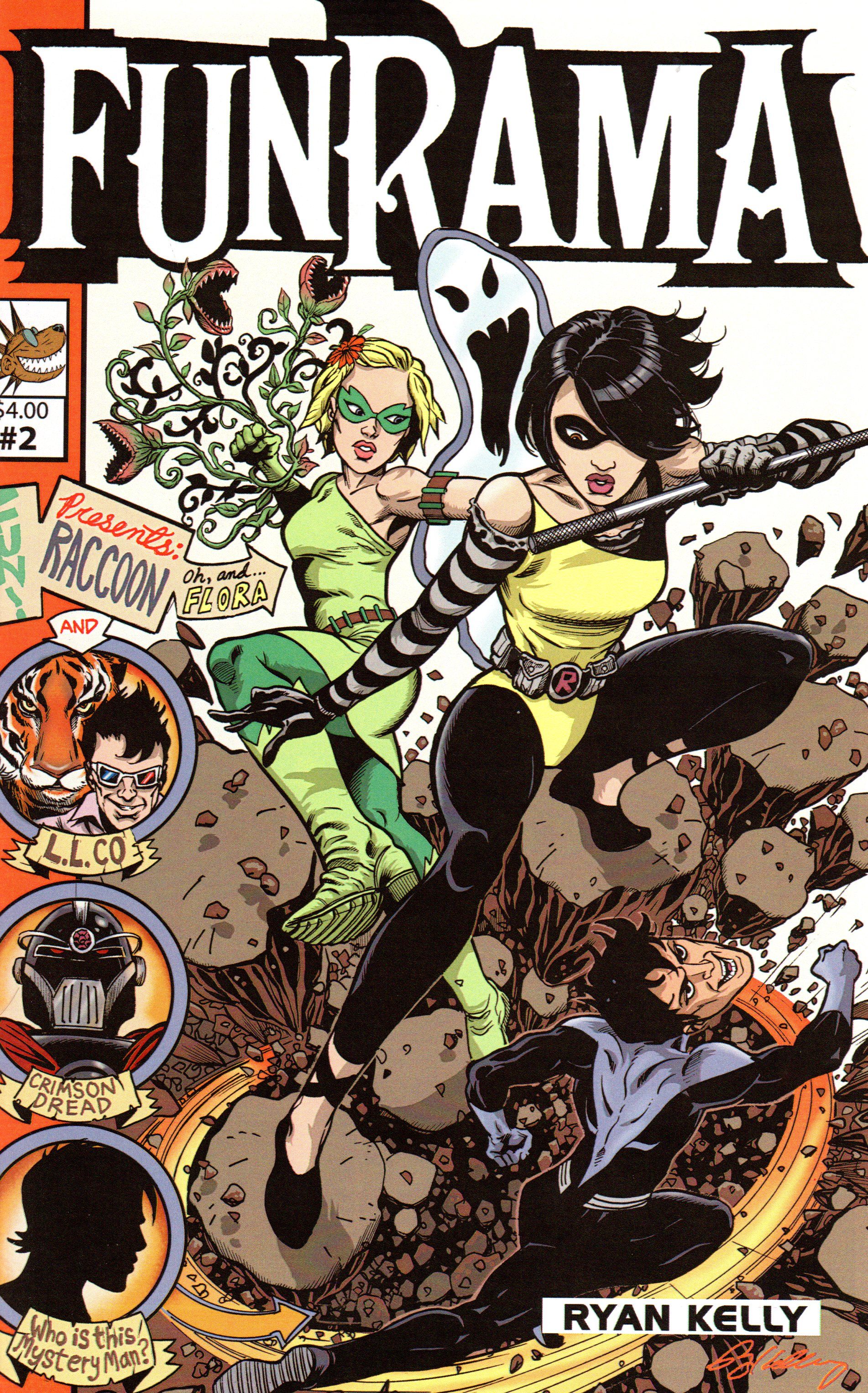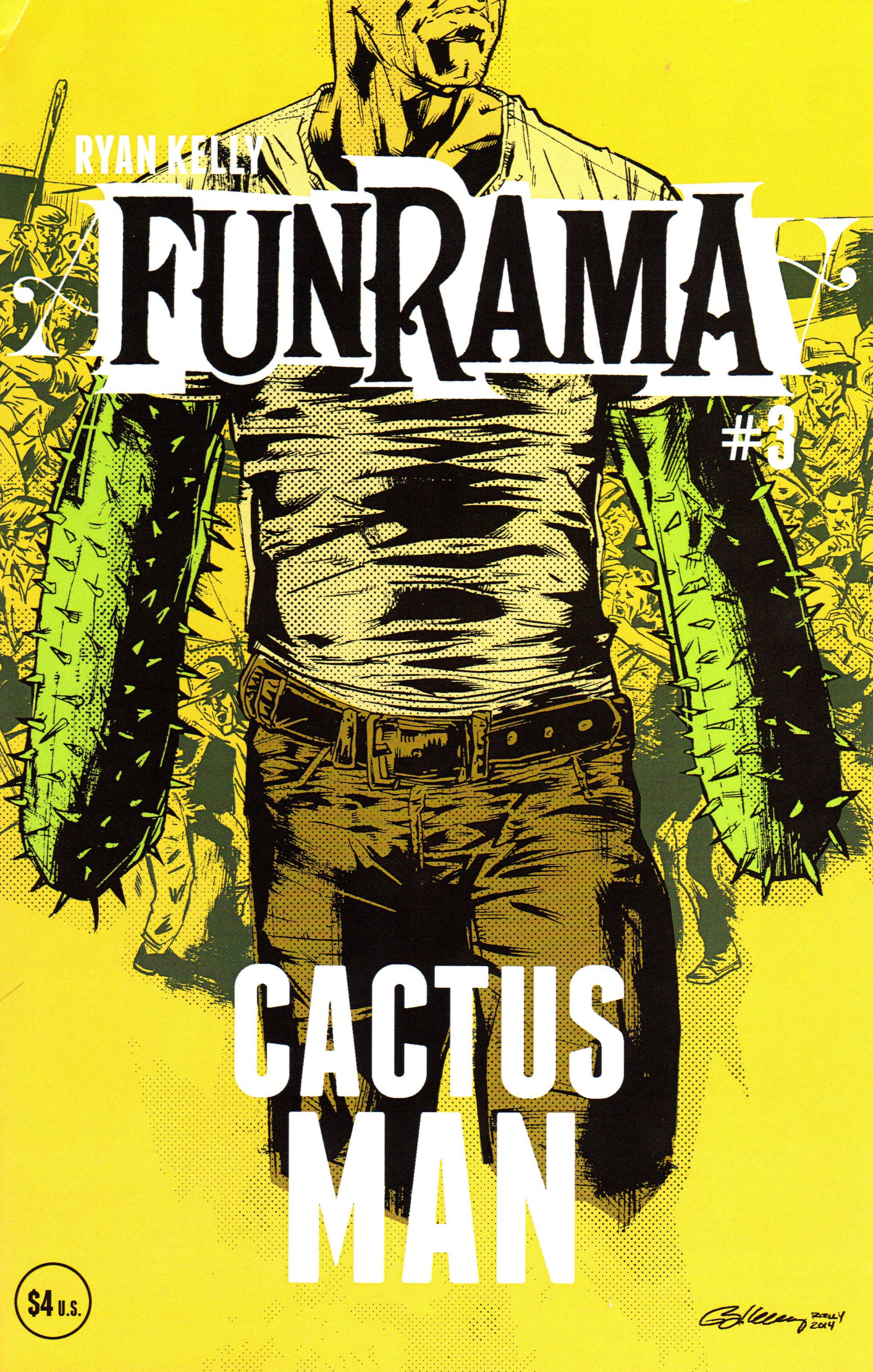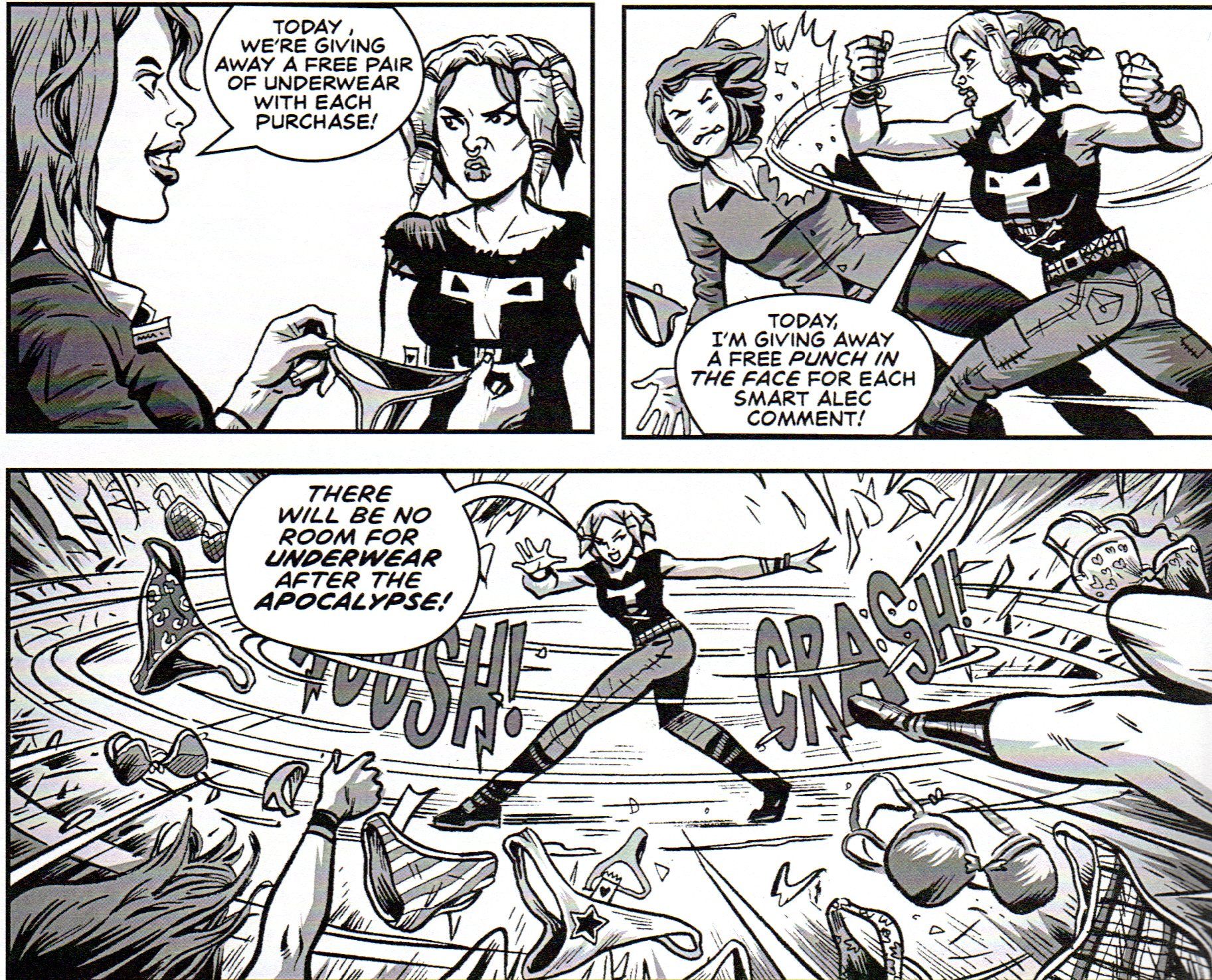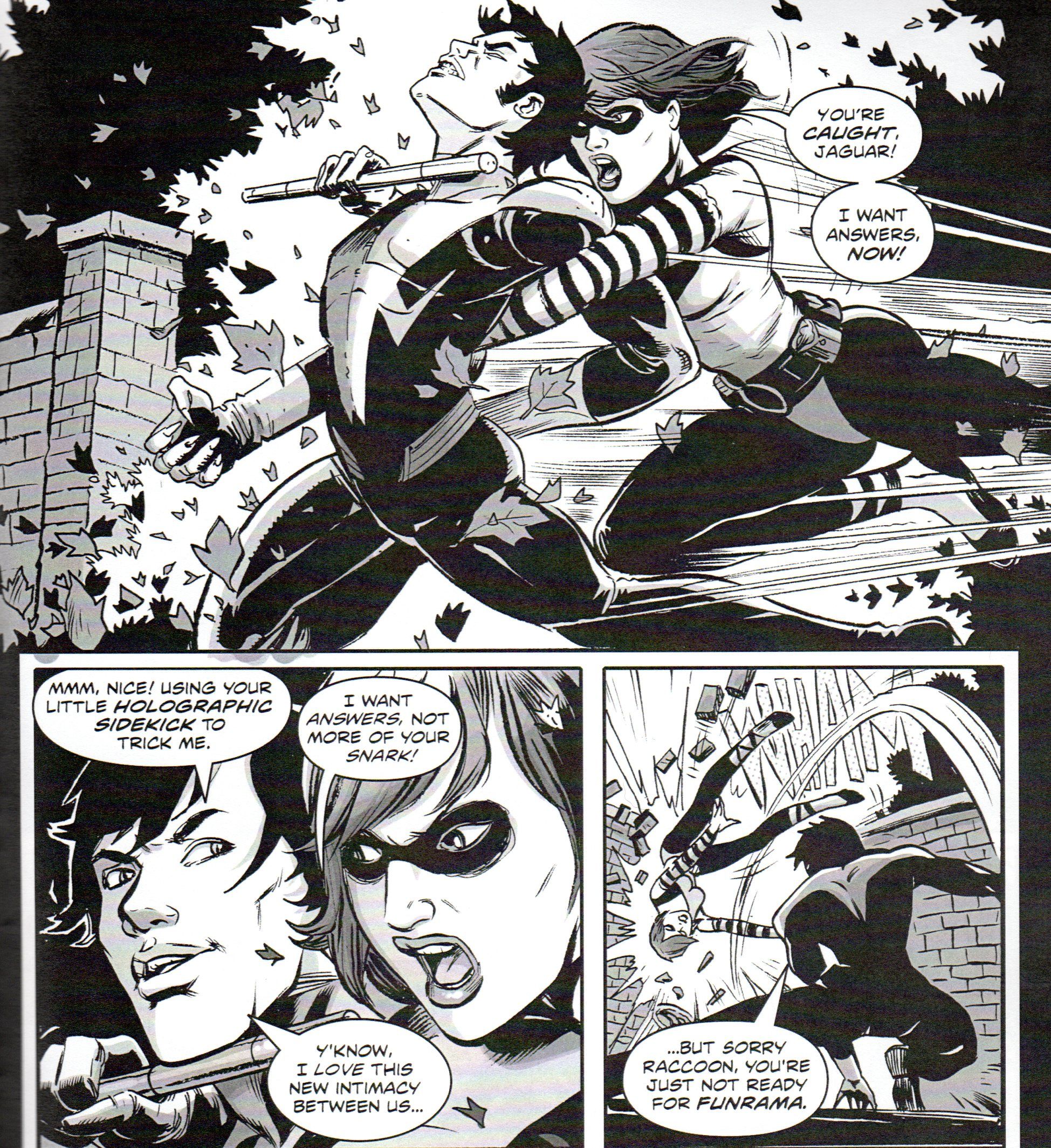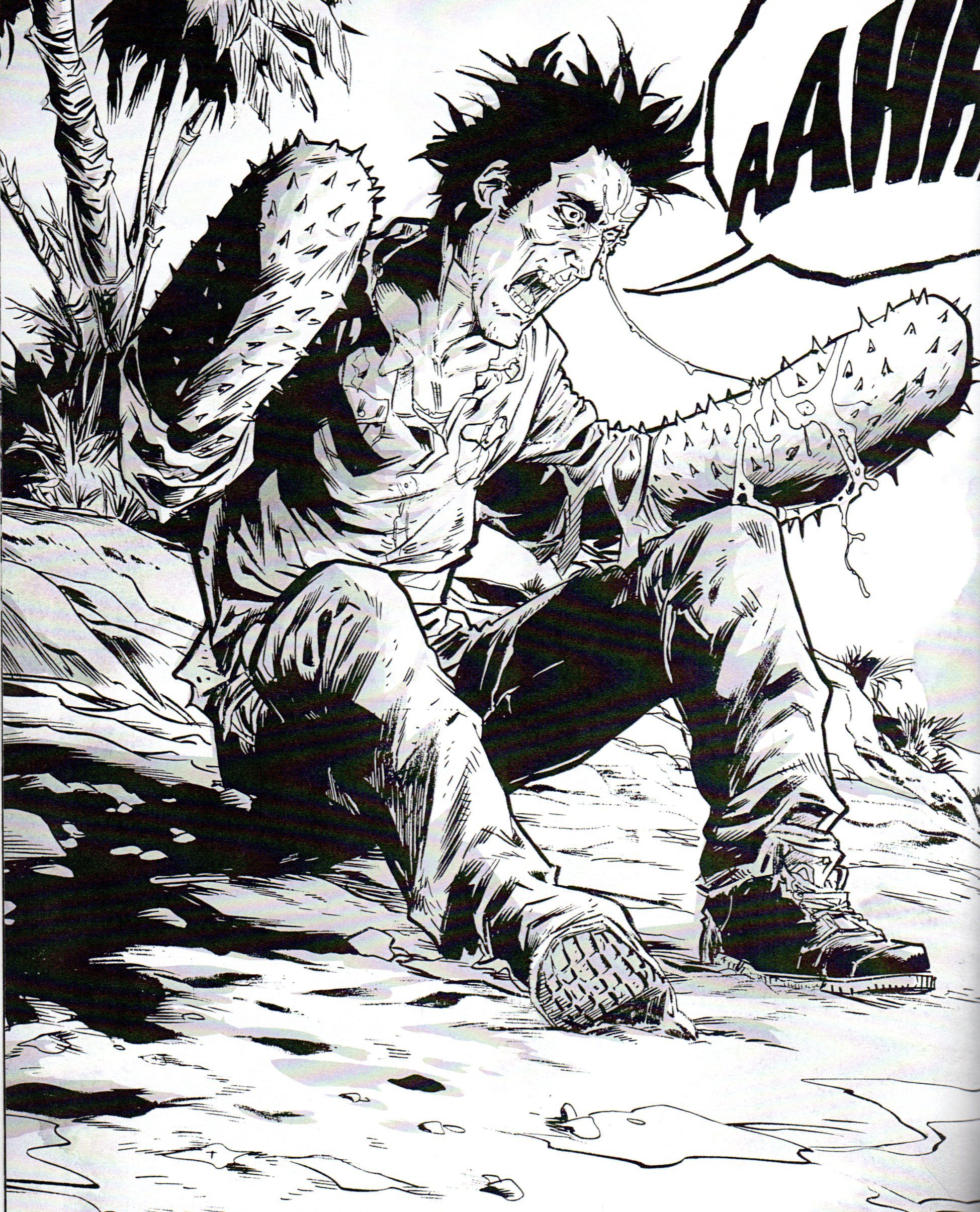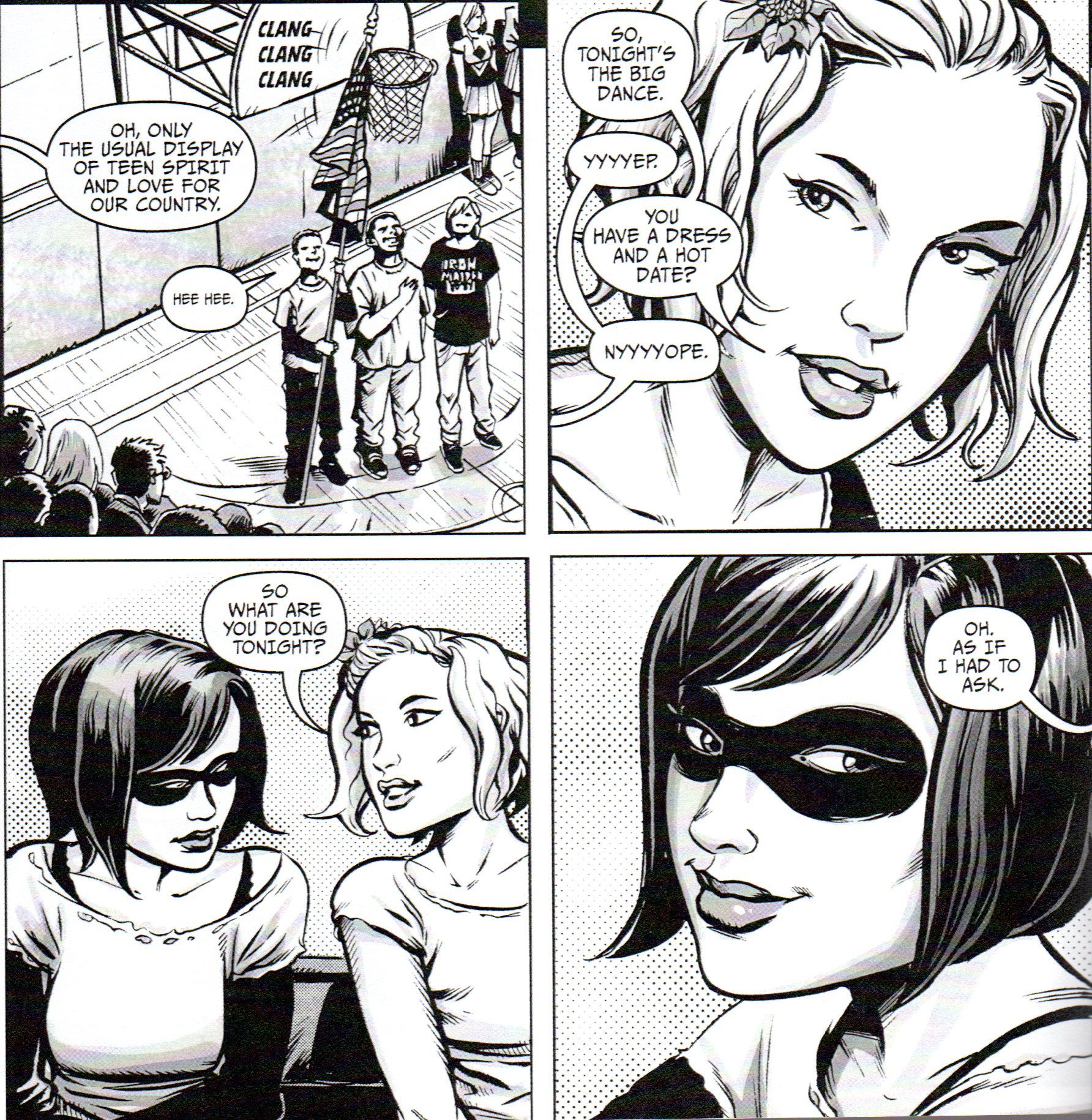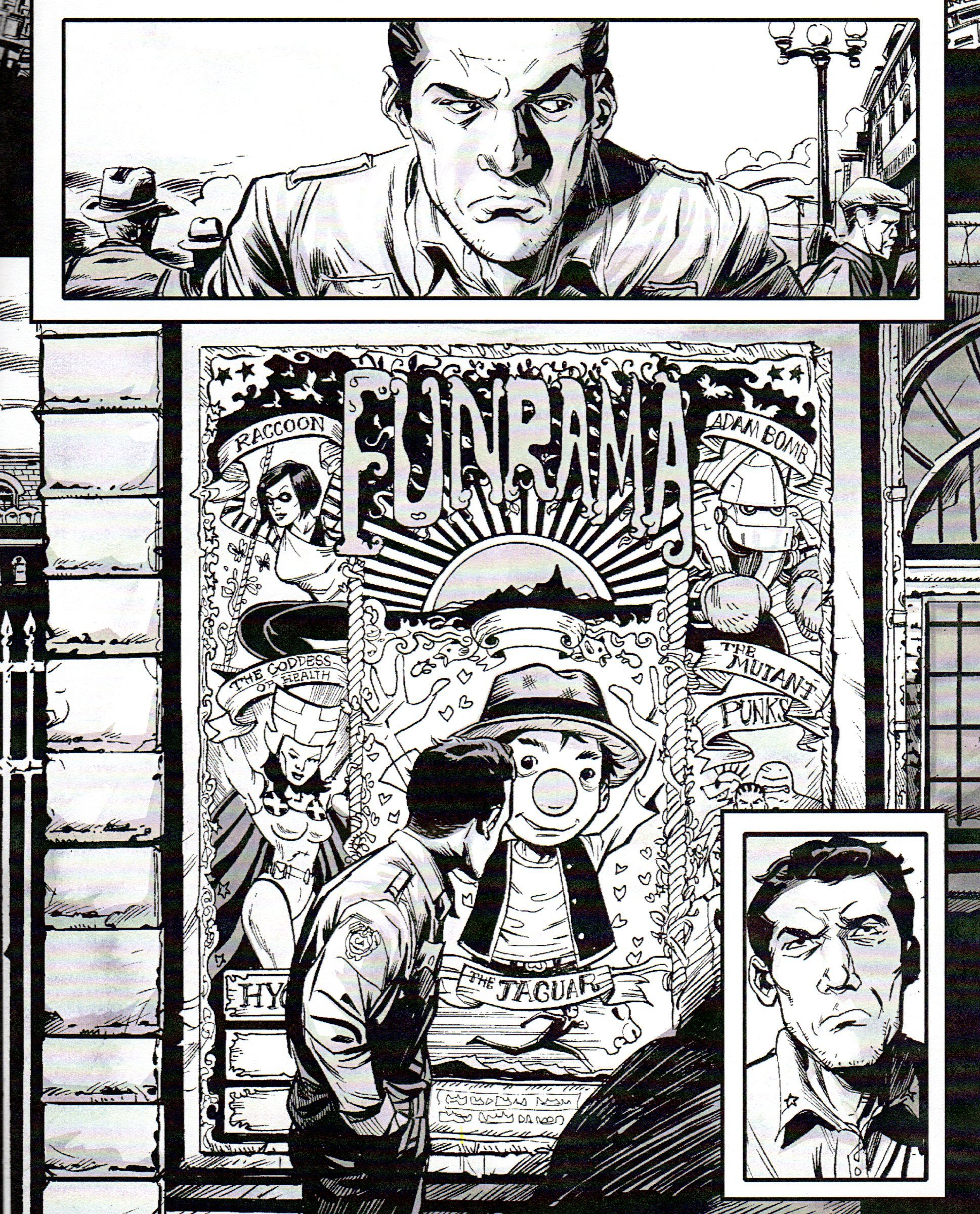"Strange voices are saying - what did they say? - things I can't understand; it's too close for comfort, this heat has got right out of hand"
Ryan Kelly was nice enough to send me the three issues of his self-published comic, Funrama, which I've known about for a few years but, like a big jerk, never got around to actually buying. You can get them at this site, either digitally like all the kids do or in print like old farts like me do.
It's your choice!
Funrama is the comic Kelly works on when he has a little bit of time, so it's not surprising that only three issues have come out - one in 2010, one in 2012, and one just a few months ago. Man, that dude is a slacker. It's like he likes food or something. It's too bad, because not only does Funrama look great - which is utterly unsurprising - but it's a weird blast of pure comics awesome, and now that I've read three issues in a row, I don't know if I can wait for the next one! Damn it, Kelly!
In Funrama, Kelly takes all the kooky stuff that we associate with superhero comics and puts it through a blender. There's some stuff that seems familiar, but that's always going to happen with superhero comics. Kelly is both mocking and playing with superhero tropes, as he gives us bizarre characters in a world that just accepts them, but which also has a "realistic" vibe to it. I'm a sucker for comics where superheroes are part of the landscape but the creator isn't afraid to explore non-superheroic aspects of the world - which is why I dig Astro City - and Kelly makes sure, after the insane first issue, that he focuses a bit more on the characters. The first issue feels a bit like a rough draft in some ways, as Kelly's art is superb but his characters are a bit thin and a bit more stereotypical than the ones in the next two.
In the two years between issues #1 and 2, he obviously got better as a writer, and it shows. It makes reading them all at one time a bit disconcerting, but once you remember the gaps between issues, it's less so.
In issue #1, Kelly throws the "mutant punks" at us. They're superpowered people who simply want to spread chaos, and so they do. They fall in line with some superhero stereotypes with "twists," which is yet another stereotype, but Kelly's take on them - that they're simply nihilists - does mitigate that a little. It's both interesting and odd that he begins with the mutant punks, because they don't seem to be "star" material. Their stories seem like they would get boring and they'd have to be killed off because they have nowhere to go but toward more destruction, so it's strange that Kelly begins here, but what the mutant punks allow him to do is get the series off to a bang. He doesn't really have to be that great a writer to make the mutant punks compelling, because he designs them so well and the issue is almost pure action with a sardonic twist to it. Kelly's smart enough to start things off with this action, so when issue #2, which focuses on completely different characters, he hopes that he's already hooked us. Issue #2 is more in what you might think of as Kelly's wheelhouse, as he introduces a high student student named Rachel, who's a bit of an outcast because she wears heavy eye makeup, making her look like a raccoon.
This doesn't seem like much of a disguise, as she happens to be a vigilante at night who goes by the name of the Raccoon, but we do learn that she has a rare medical condition that makes her eyes extremely sensitive to light, and the makeup helps her get through the day by absorbing much of the light that comes near her eyes. People don't seem to know of the Raccoon's existence, which probably helps keep her identity secret. Kelly is much more at home with Rachel and her best friend, Flora, who actually has powers that let her control plants. Flora is constantly trying to come up with superhero outfits, many of which are hideous, and she provides good comic relief to Rachel's story, in which we learn that her parents, in order to pay Rachel's medical bills, turned to a life of superpowered crime and were sent to prison. Plus, there's a mysterious dude who keeps appearing and saying cryptic things to Rachel. Finally, in issue #3, Kelly goes back in time to the Depression, and we meet Floyd MacAloon, a thug for business owners who provokes union members into violence so the newspapers can show them in an awful light. Floyd's a punk, but he does have a conscience, and when his boss steps up the violence to lethal levels, Floyd has enough, which gets him beaten and thrown off a bridge. Luckily for him, he has an interesting experience, and the story links up with the first two issues. Kelly is playing a long game, so the fact that he gives us three disparate stories starring three different groups of characters isn't a big deal, because he does link them all through Funrama.
The title of the series refers to, as one character puts it, "an island in the middle of the Bermuda Triangle" that's "the center of a massive source of electromagnetic energy which opens doors to other dimensions and is responsible for metahumans on earth."
If that's not enough, "one man, a circus clown, operates Funrama with the help of two warriors." This description screams COMICS! and is one of the reasons I love the medium, because Kelly doesn't really need to explain it any more than that. In the first issue, we find out that the mutant punks pass between dimensions through a black gate that looks like if the monolith from 2001: A Space Odyssey had branches sticking out of it. In issue #2, the mysterious dude, whose name is Jaguar, recruits Rachel to fight a war that threatens Funrama, which would have dire consequences for the rest of the world. And in issue #3, Floyd falls through a portal when he's thrown off the bridge and ends up in Funrama in our present, which is where Jaguar recruits him as well. So Kelly is "gathering the troops," which is a fairly standard way to write comics, but instead of doing it quickly, he's creating stories for the characters as well, so it's taking a bit longer. There's nothing wrong with this, of course, and the fact that he comes up with actual stories for the characters and fleshes them out quite well - at least with Rachel and Floyd in issues #2 and 3 - makes it feel less like gathering the troops and more like characters living their lives and just happening to intersect. It's a good way to disguise things.
Obviously, Kelly is far more well known as an artist, and the art on the series is stellar. His designs are amazing, which isn't surprising. That he does smooth and well constructed action scenes isn't too surprising, either, even though Kelly doesn't draw superhero books all that often (in fact, as far as I can remember, he's never done them). His cartoony style, with his curvy lines and attention to detail, seems to help his action scenes work a bit better.
What is surprising is Kelly's sense of humor, as this comic is quite funny, mostly due to the art (although the writing is still fairly light). Obviously, the absurdity of the designs have something to do with it - Bombcat is an anthropomorphic cat with a spiky mohawk - but Kelly also does nice work with facial expressions and character interactions, like when the Fog happily pickpockets a group of rioters or when the mutant punks cry crocodile tears when the president thinks he's talked them out of violence or with Flora's poorly designed costumes. Issue #3 is more serious, but even so, the fact that Kelly gives Floyd cacti for arms is absurd, but Kelly sells it really well. It's neat watching the progression of Kelly over the course of four years, as in issue #1, he uses more spot blacks and fewer grayscales (although he does use grays), with a fairly strong line throughout. He still uses a lot of blacks in issue #2, but he's a bit softer when he draws the girls' faces, which he contrasts a bit with the Jaguar's harder visage. In issue #3, he's backed off a little bit on the blacks, with a bit more grays, perhaps reflecting the 1930s setting or the morally murky area that Floyd inhabits. It's a very interesting change. Throughout, of course, we get Kelly's amazing eye for details - the mall that the mutant punks destroy in issue #1 is delightfully packed with weird stores and products, the Crimson Dread in issue #2 is a wonderfully detailed robot, the poster Floyd finds advertising Funrama is magnificent, and the Depression-era city he lives in feels oppressive and dirty. As usual, Kelly also does marvelous work with body language. Twisterella and Concord are creepily turned on by conquest, for instance. Kelly has always been good at drawing girls who are somewhat unsure about themselves, and he does that very well with Rachel in issue #2. Kelly does a really nice job showing Floyd's transformation from a thug into a thug with a conscience. The humanity of the characters is what helps sell the insanity of the circumstances in which they find themselves.
Kelly's art has been good for years, and he constantly tweaks it to change it in interesting ways without radically altering the way it looks. In Funrama, we can see that as it unfolds over the course of several years. It also shows that Kelly knows a thing or two about writing a comic, which is always nice to see. He's fearless in his writing partly because he knows his art can carry the day if his words aren't quite up to the level of the art. Luckily, that doesn't happen very often in Funrama, which is a bizarre, fun house mirror version of superhero stories. It's a very neat comic, and it wouldn't kill you to seek it out. Would it?!?!?
Rating: ★ ★ ★ ★ ★ ★ ★ ½ ☆ ☆

